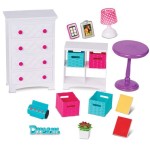Understanding the Benefits of Screw-On Rubber Furniture Feet
Furniture feet, often overlooked, play a crucial role in protecting flooring, reducing noise, and enhancing the overall stability of furniture. Among the various types available, screw-on rubber furniture feet offer a versatile and effective solution for a wide range of applications. This article will explore the advantages of using screw-on rubber feet, their different types, how to select the appropriate ones for specific needs, and provide guidance on proper installation and maintenance.
The primary function of furniture feet is to act as a buffer between the furniture and the floor. Without them, the direct contact of furniture legs, especially those made of hard materials like wood or metal, can lead to scratches, dents, and other forms of damage to flooring surfaces such as hardwood, tile, laminate, and vinyl. Screw-on rubber feet create a non-abrasive interface, mitigating the risk of such damage. Furthermore, they can significantly reduce noise caused by furniture being moved or bumped, contributing to a quieter and more comfortable living or working environment.
Beyond protection and noise reduction, screw-on rubber furniture feet also enhance stability. The rubber material provides a greater level of grip compared to bare furniture legs, minimizing the likelihood of furniture sliding or wobbling. This is particularly important for items like chairs, tables, and sofas, where stability is crucial for safety and comfort.
Key Benefits of Screw-On Rubber Furniture Feet
Screw-on rubber furniture feet offer several distinct advantages that make them a popular choice for both residential and commercial applications. These benefits extend beyond basic floor protection and contribute to the long-term preservation of both furniture and flooring.
One of the primary benefits is their secure and reliable attachment. Unlike adhesive-backed pads, which can peel off over time, screw-on feet are firmly affixed to the furniture leg. This ensures long-lasting protection and stability, reducing the need for frequent replacements. The screw mechanism allows for a tighter and more permanent connection, especially beneficial for heavier furniture items.
Another significant advantage is their adaptability to different types of furniture legs. Screw-on feet can be easily installed on a variety of materials, including wood, metal, and plastic. The screw length and diameter can be adjusted to accommodate different leg thicknesses and shapes. This versatility makes them a practical solution for a diverse range of furniture pieces.
Furthermore, screw-on rubber feet offer superior durability compared to other options. Rubber is a resilient material that can withstand significant wear and tear. It is resistant to abrasion, impact, and compression, ensuring that the feet maintain their protective properties over an extended period. The screw-on design also allows for easy replacement if a foot becomes damaged or worn.
Types of Screw-On Rubber Furniture Feet
The market offers a variety of screw-on rubber furniture feet, each designed to meet specific needs and preferences. Understanding the different types available is essential for selecting the most appropriate option for a particular application.
One common type is the standard round rubber foot. These feet are typically made of solid rubber and have a flat or slightly rounded bottom. They are suitable for general-purpose use on a wide range of furniture items. Round feet provide good stability and floor protection and are available in various sizes to accommodate different leg dimensions.
Another type is the adjustable screw-on foot. These feet feature a threaded stem that allows for height adjustment. This is particularly useful for leveling furniture on uneven surfaces. The adjustable mechanism ensures that all legs are in contact with the floor, preventing wobbling and enhancing stability. These are commonly used on tables, desks, and appliances.
Swivel screw-on rubber feet are designed to allow the furniture to rotate smoothly. They are ideal for chairs and stools that require easy maneuverability. The swivel mechanism reduces friction and prevents the furniture from dragging or scratching the floor. These feet are often used in office environments and dining areas.
For heavier furniture items, reinforced screw-on rubber feet are available. These feet feature a metal insert or plate that provides additional strength and support. The reinforcement prevents the rubber from compressing or deforming under heavy loads, ensuring long-lasting performance. They are suitable for sofas, cabinets, and other large pieces of furniture.
Specialty screw-on rubber feet are also available for specific applications. These may include feet with non-marking rubber compounds, vibration-dampening features, or unique shapes designed for particular furniture styles. Understanding the specific requirements of the furniture and the environment is crucial for selecting the appropriate specialty foot.
Selecting and Installing Screw-On Rubber Furniture Feet
Choosing the right screw-on rubber furniture feet and installing them correctly are critical for maximizing their benefits. Several factors should be considered during the selection process, and proper installation techniques are essential for ensuring a secure and effective attachment.
The first step is to determine the appropriate size of the foot based on the dimensions of the furniture leg. Measure the diameter or width of the leg to ensure that the foot is neither too large nor too small. A foot that is too large may look unsightly, while one that is too small may not provide adequate stability or protection. Also consider the height of the leg and choose a foot that will not make the furniture appear excessively elevated.
The material of the rubber is another important consideration. Different rubber compounds offer varying levels of durability, grip, and resistance to wear. Softer rubber compounds provide better grip and are less likely to scratch sensitive surfaces, but they may wear down more quickly. Harder rubber compounds are more durable but may not provide as much grip. Select the rubber compound that best suits the specific needs of the furniture and the flooring material.
The screw size and type should also be carefully selected. The screw length should be appropriate for the thickness of the furniture leg. A screw that is too short may not provide a secure attachment, while one that is too long may protrude through the leg. The screw diameter should match the hole in the rubber foot. It is generally recommended to use screws made of corrosion-resistant materials, such as stainless steel, to prevent rusting and ensure long-lasting performance.
Before installing the screw-on rubber feet, clean the furniture legs thoroughly to remove any dirt, dust, or debris. This will ensure a better adhesion between the foot and the leg. If the furniture leg is made of hardwood, it may be necessary to pre-drill a pilot hole to prevent splitting. Use a drill bit that is slightly smaller than the diameter of the screw.
Position the rubber foot on the furniture leg and align the screw hole with the pilot hole (if pre-drilled). Use a screwdriver to carefully screw the foot into place. Avoid over-tightening the screw, as this can damage the rubber or strip the threads. Tighten the screw until the foot is snug against the leg and does not wobble. Repeat this process for all the furniture legs.
Once the screw-on rubber feet are installed, test the furniture for stability. Place the furniture on a level surface and check for wobbling or rocking. If the furniture is unstable, adjust the height of the feet by loosening or tightening the screws until all legs are in contact with the floor. For adjustable feet, use the threaded stem to fine-tune the height.
Regular inspection and maintenance are essential for ensuring the continued performance of screw-on rubber furniture feet. Periodically check the feet for signs of wear, such as cracks, tears, or compression. Replace any damaged or worn feet immediately to prevent damage to the flooring or furniture.
Clean the rubber feet regularly to remove dirt and debris. Use a mild soap and water solution and a soft cloth to gently wipe the feet. Avoid using harsh chemicals or abrasive cleaners, as these can damage the rubber. For stubborn dirt or stains, use a specialized rubber cleaner.
By carefully selecting the appropriate screw-on rubber furniture feet, installing them correctly, and performing regular maintenance, one can ensure that furniture is protected, floors are preserved, and the overall stability of the furniture is enhanced. These seemingly small additions can make a significant difference in the longevity and usability of furniture items.

Ace 7 8 Screw On Rubber Pads White 4 Pack

Rubber Feet Bumper Pads M6 M8 M10 Bolt 20mm Height Round Furniture Non Slip

4pcs Rubber Feet Bumper Pads Buffer W Screws For Chair Legs D24x20xh15mm

Rubber Furniture Stopper Feet Made In Germany Etsy

Screw On Rubber Feet For Furniture Chairs Tables Sofas Stools Legs Non Slip Pads Ebay

8 Pcs Rubber Feet Pad Screw In Furniture Leg Bumpers Pads For Tables Sofas

32 Pcs Premium Non Slip Screw On Rubber Feet By X Protector 0 95

Hinespon 8 Pcs Rubber Feet Pad Screw In Furniture Leg Bumpers Pads For Tables Sofas

Everbilt 7 8 In Clear Rubber Like Plastic Screw On Surface Bumpers 4 Pack 49072 The Home

Non Slip Chair Leg Floor Protectors 1000pcs Transparent Rubber Table Caps With Screws For Furniture Feet 2024 Edition








